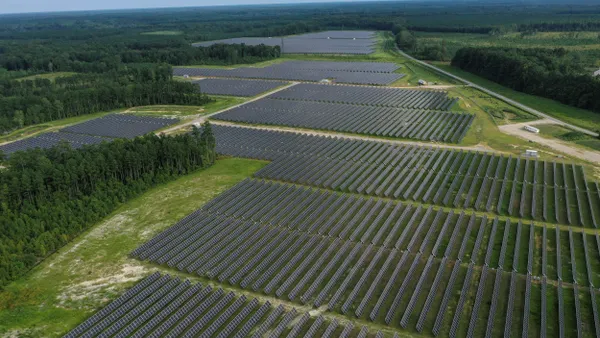The following is a contrbuted article by Ingrid Behrsin, Francesca Disano, and Hannah Safford from the University of California Davis Policy Institute for Energy, Environment, and the Economy.
Renewable portfolio standards (RPSs) are the most influential state-level policies for encouraging renewable energy development in the United States. Approximately half of the nation's renewable energy growth can be attributed to these policies. Thirty states have adopted a binding RPS to date, though specifics vary greatly from state to state.
While a Biden administration will undoubtedly advance a renewable energy agenda, it may also be hamstrung by a divided Congress, leaving the momentum to combat climate change in states' hands.
Unfortunately, poor data-collection, -management and -sharing practices create barriers for understanding the outcomes of state RPS policies. These practices can be greatly improved to better support decision-making by the policymakers, analysts and researchers who play pivotal roles in steering state-level renewable energy transitions.
There are three primary issues that limit the utility of state-reported RPS datasets.
First, state RPS datasets are often difficult to access and use. Only a subset (24) of the 30 states that have binding RPS policies make data about the facilities that contribute to the RPS available to the public. And even publicly-available datasets are often formatted in a way that makes data analysis difficult: for example, by including multiple units within one data column.
Second, many state RPS datasets lack important information. While almost all public RPS datasets include basic information such as facility name, nameplate capacity and fuel type, additional data categories beyond these fundamental elements vary widely. Seven of the 24 public datasets lack any facility location data at all. In datasets that do include location attributes, granularity ranges from general location within the state to precise GPS coordinates. The Montana RPS dataset is one of the most comprehensive available and provides a good template for other states to follow.
Third, state RPS datasets are often incompatible. The fact that there is no standard, nationally-used identification system for facilities in state RPS datasets makes it impossible to quickly and accurately integrate state RPS datasets with each other and/or with federal energy datasets. This is particularly important as the Energy Information Administration (EIA) provides detailed information for individual utility-scale energy facilities that complements state RPS datasets. State RPS datasets also exhibit variation even among commonly reported data types. For example, states use different units to report facility power output (nameplate) capacity and different categories for fuel types. This variation makes it challenging to compare data across state lines.
States can address these challenges by adopting a few simple changes in the ways they report RPS data.
Make RPS datasets public and employ data science best practices
- State RPS datasets should be made easily accessible on the website of each state's public utility commission (or other appropriate agency). Development of these datasets should follow best practices from data science, such as reporting data in unmerged rows and columns, avoiding special characters, and using consistent units within data columns.
Include standard elements for RPS datasets
- A standard template for state RPS data reporting should include basic categories such as facility name, state location, zip-code location, nameplate capacity (in megawatts) and fuel type. States may then choose to augment this template with additional categories as appropriate and desired.
Include the EIA plant code in RPS datasets
- The simplest way to harmonize RPS data reporting is to have all state RPS datasets include the federal EIA plant code (a unique and consistent facility code) for each utility-scale facility. This change would allow policymakers and researchers to expand on overarching progress, patterns and differences between state data reports with information from federal datasets.
A realistic way forward
Because RPS policies are such powerful tools for expanding renewable energy adoption, those in decision-making positions need to be able to easily understand these policies' effects. Robust and well-organized RPS datasets are central to this need. For example, while RPSs can create "green" jobs and reduce pollution, they can also have some adverse effects such as habitat intrusion.
Different types of energy sources included in RPS portfolios will also have unique upsides and downsides. Improving data reporting for RPSs will inform more comprehensive understandings of these outcomes.














